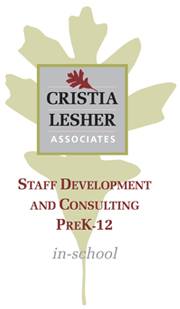#1 Using ‘Muscle Numbers’ to teach place value
Date: March 25th, 2015
By: Tom Schersten
Tom Schersten: One of the big ideas of elementary math education, perhaps the biggest idea, is that of place value. We teach place value to our kids every single year, and every year we complain that they just don’t seem to get it. I think it’s important to acknowledge that our way of teaching computation has traditionally gotten in the way of understanding place value. We are inadvertently missing opportunities to describe what the numbers are worth.
Let’s take for instance the number 135. When I say, “One hundred and thirty-five,” I’m naming the values of these numbers from left to right. But as soon as I start to add or subtract with this number, I start calling the “one hundred” a “one” and I start calling the “thirty” a “three.” When I do that, vital information is missing about the quantities that we’re involving in the computation.
If we don’t know what the quantities are, how do we know if our result is reasonable? I think we can help the kids break the habit of calling numbers by their digit name and calling them by their values by invoking some bodily kinesthetic connections.
For instance, place value with base 10 has increasing magnitude right to left by 10, so, when I say these numbers, I’m going to increase the volume of my voice to match the increasing magnitude of value. For example, when I say a number in the tens column, I’m going to say it with a louder voice than a number in the ones column. I will say “thirty” like this, [loudly] “THIRTY.” Since I want to emphasize that it’s 10 to the first power, a powerful number, I’ll even make a bicep muscle and say [loudly, while making a bicep], “THIRTY.” Then I’ll add some affect to it. [loudly and dramatically] “THIRTY.” That’s how we’ll say numbers in the tens column.
Now, when we say a number in the ones column, we’re going to say it, with a much smaller voice. The five is going to sound like this [weakly], “Five,” and the muscle it gets is just going to be a pinky. Here’s what the ones column looks and sounds like [weakly, while crooking pinky], “Five.”
On the other hand, when we go to the hundred, it’s 10 to the second power, so we’re going to make two bicep muscles and say it even more loudly, like this [yelling], “ONE HUNDRED!!!”
When I say the entire number, I will say [yelling and making two biceps], “ONE HUNDRED!!!”; [loudly and making one bicep], “THIRTY”; [weakly and crooking one pinky], “Five.”
This helps the kids match up what the values are, thus increasing their understanding.
When we know what the place values are, it opens up lots of different options for mental computation. I challenge you, add a little drama to your classroom by calling numbers by their values. I call them “Muscle Numbers.”
The next video will be showing how to connect up the concrete manipulations of addition and subtraction with the abstract representations. Most teachers complain that kids are not making those connections, so the next video will show how to make those explicit connections. Thank you.

